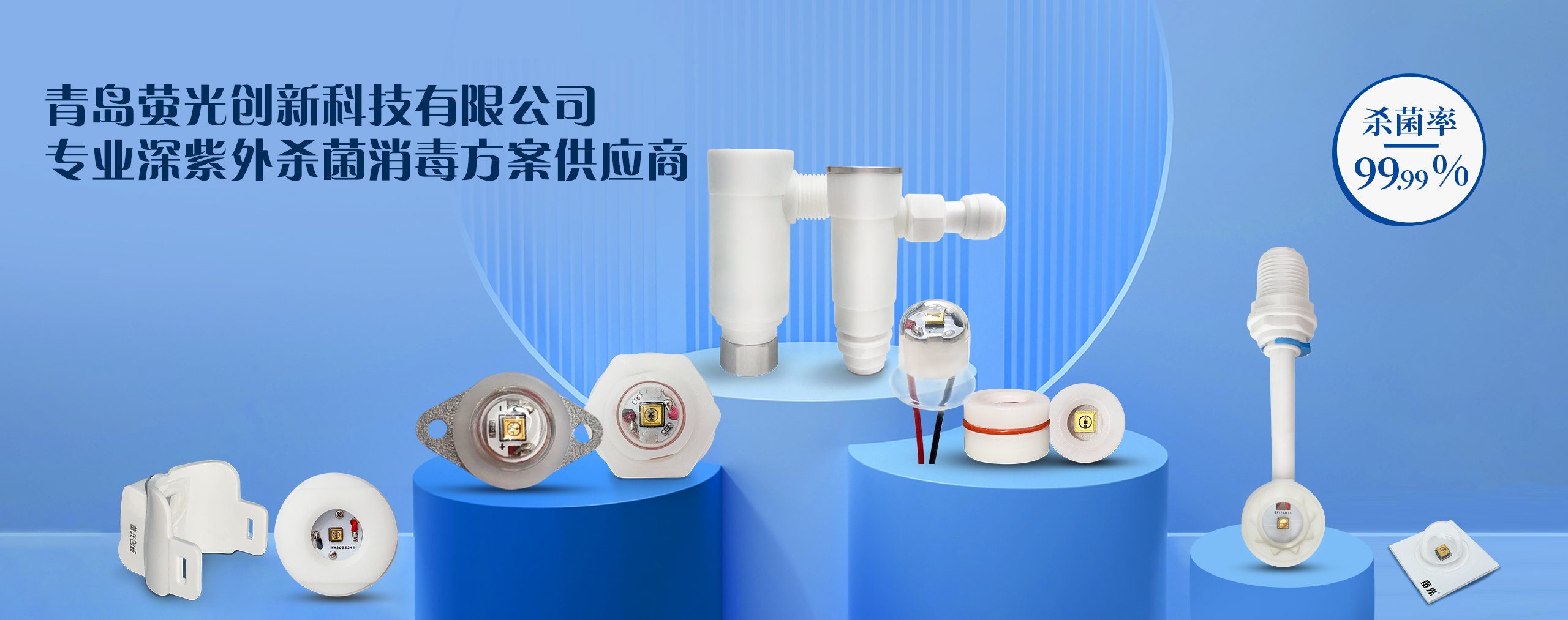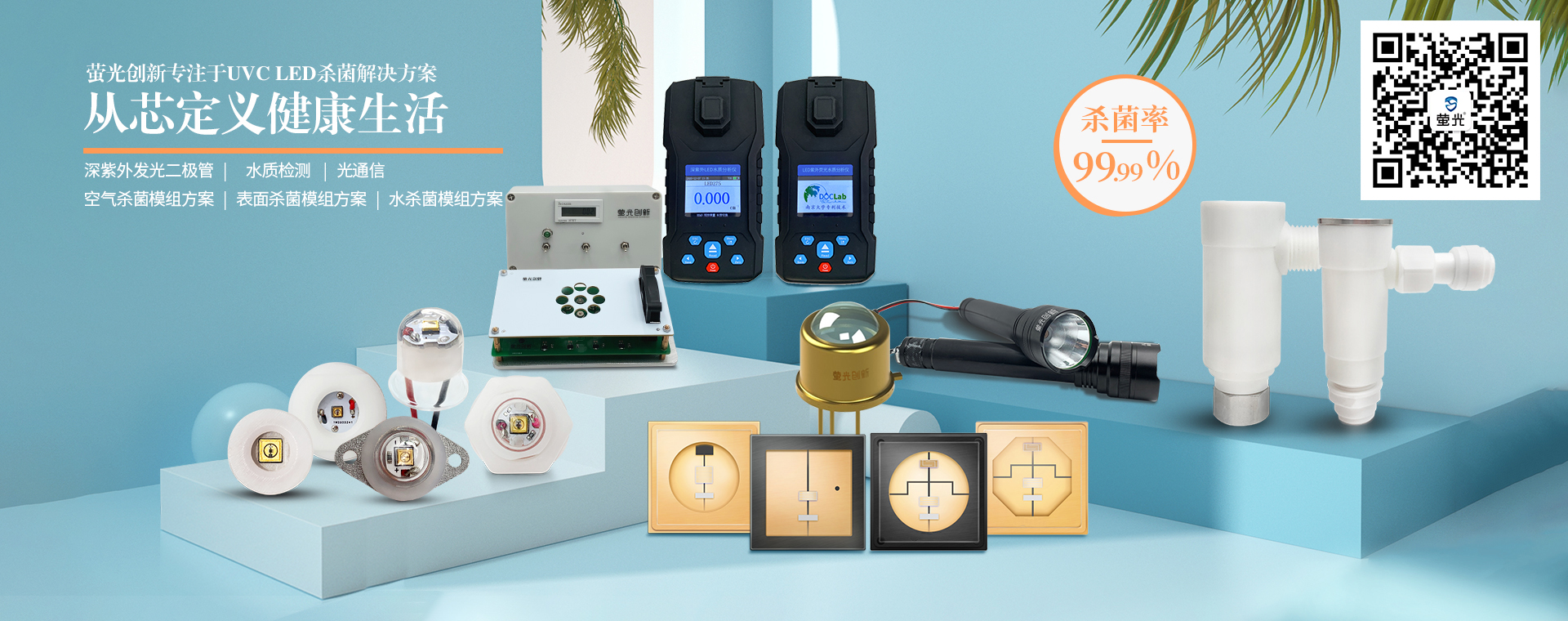What is the difference between UVA / UVB / UVC? This article let you know enough!
发布时间:2022-04-02 15:49
来源:萤光创新

According to different biological effects, ultraviolet light is divided into four bands according to wavelength: long wave UVA, medium wave UVB and short wave UVC. The longer the wavelength, the stronger the penetration.
1、 Long wave UVA, with a wavelength ranging from 320nm to 400nm, is also known as long wave black spot effect ultraviolet. It has strong penetration, can penetrate glass and even 9 feet of water; And it exists all year round, whether cloudy or sunny, day or night.
Degree of harm to human body: more than 95% of the ultraviolet rays exposed to daily skin are UVA, so it is the most harmful to the skin. UVA can attack the dermis through the epidermis, causing severe damage to bone collagen and elastin in the skin; Moreover, the self-protection ability of dermal cells is poor, and a small amount of UVA can cause great damage. Over time, the skin has problems such as relaxation, wrinkles and the emergence of microvessels. At the same time, it can activate tyrosinase, leading to immediate melanin deposition and the formation of new melanin, making the skin black and lack of luster. UVA can cause long-term, chronic and lasting damage and premature aging of skin, so it is also called aging ray.
Application field: uva ultraviolet with 360nm wavelength conforms to the phototaxis response curve of insects, and can be used to make insect trap lamps. UVA ultraviolet with the wavelength of 300-420nm can pass through the special colored glass lamp tube that completely cuts off the visible light, and only radiate the near ultraviolet light centered at 365nm. It can be used in ore identification, stage decoration, banknote verification and other places.
2、 Medium wave UVB, with a wavelength between 275nm-320nm, is also known as medium wave erythema effect ultraviolet. Medium penetration. The part with shorter wavelength will be absorbed by transparent glass. Most of the UVB contained in sunlight is absorbed by the ozone layer, and less than 2% can reach the earth's surface, which will be particularly strong in summer and afternoon.
Degree of harm to human body: it will oxidize the protective lipid layer of the skin and dry the skin; Further, the nucleic acid and protein in epidermal cells are denatured, resulting in symptoms such as acute dermatitis (i.e. sunburn), and the skin will turn red and painful. In severe cases, such as long-term exposure, it is also easy to cause skin cancer. In addition, the long-term damage of UVB will also cause the variation of melanocytes, resulting in solar spots that are difficult to eliminate.
Application area: ultraviolet health lamp, plant growth lamp is issued by using special violet glass (not light below 254nm) and the peak value of phosphor near 300nm.
3、 Short wave UVC, with a wavelength ranging from 200nm to 275nm, is also known as short wave sterilization ultraviolet. It has the weakest penetration ability and cannot penetrate most of the transparent glass and plastic. The short wave ultraviolet contained in sunlight is almost completely absorbed by the ozone layer and is absorbed by the ozone layer before reaching the ground.
Degree of harm to human body: UVC in nature is absorbed by the ozone layer before reaching the ground, and its impact on the skin can be ignored. However, in fact, short wave ultraviolet radiation does great harm to the human body and cannot directly irradiate the human body. If direct irradiation, short-term irradiation can burn the skin, and long-term or high-intensity irradiation can also cause skin cancer.
Application fields: short wave ultraviolet is widely used in hospitals, air conditioning systems, disinfection cabinets, water treatment equipment, drinking fountains, sewage treatment plants, swimming pools, food and beverage processing and packaging equipment, food factories, cosmetics factories, dairy factories, breweries, beverage factories, bakeries and cold rooms.
Among all wavelengths of ultraviolet rays, only short wave ultraviolet UVC has the function of sterilization and disinfection. It belongs to a pure physical disinfection method. It has the characteristics of broad spectrum, high efficiency, fast and complete, no need to add chemical agents, no drug resistance, no secondary pollution and so on.
At present, UVC is mainly divided into UV mercury lamp and UVC led. Mercury lamp or commonly known as mercury lamp is the most mainstream product of ultraviolet disinfection, curing and exposure. Even fluorescent lamp and energy-saving lamp are also one of the largest applications of mercury lamp. Compared with mercury lamp, the service life of LED lamp can usually exceed 20000 hours, which is more than 10 times that of traditional mercury lamp. Moreover, it has fast starting speed and small volume. It can be designed to meet different application needs. Compared with mercury lamp, LED lamp has higher application flexibility. More importantly, UV LED will not cause environmental pollution and consume less energy. It is more environmentally friendly and safe than mercury lamp. UV lamps will become the mainstream of UV light source in the long run.
However, at present, UVC LED has not completely replaced mercury lamp. Among the UV LED technologies, the most mature one is UVA led, which is mainly used in UV glue curing, UV printing and UV exposure. Compared with the mature UVA led, UVC LED chip has high manufacturing difficulty and low luminous efficiency. At present, it is still in the development stage.
Qingdao fluorescent Innovation Technology Co., Ltd. has a professional postdoctoral team, focusing on the research of ultraviolet sterilization application. After years of deep cultivation in the ultraviolet industry, the company has obtained a number of national invention and utility model patents. At present, a number of sterilization module products have been put into the market. For more details, please visit the company's website at www.qdyingguang.com Com contact the company for the official account of WeChat.

Keywords: 220nm, 230nm, 235nm, 240nm, 245nm, 250nm, 255nm, 260nm, 265nm, 270nm, 275nm, 280nm, 285nm, 290nm, 295nm, 300nm, 305nm, 310nm, 315nm, 320nm, 330nm, 340nm, 365nm, 395nm, 405nm, to39, uvworks, uvworks, UVC works, UVC EOS, UV LED, UVA led, UVB led, UV LED, deep UV LED, UV sterilization, UV disinfection, UV sterilization Ultraviolet disinfection scheme, sterilization module, water purifier sterilization, terminal sterilization faucet, static water sterilization component, flowing water sterilization component, ultraviolet sterilization water purifier, sterilization faucet, toothbrush sterilization, water cup sterilization, surface sterilization, water sterilization, air sterilization and phototherapy
